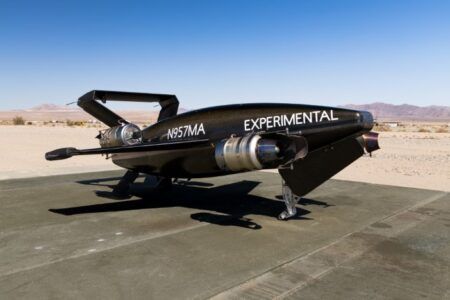The 586th Flight Test Squadron at Holloman Air Force Base, New Mexico, will be integrating new smart radios to improve and adapt the current flight test capabilities and meet the increasing need to support rapid software-based development technologies.
The 586 FLTS is part of the 704th Test Group, which is a unit of Arnold Engineering Development Complex, headquartered at Arnold Air Force Base.
According to Gerardo Sanchez, mechanical engineer with the 586 FLTS, the smart radio technology is a much needed upgrade to the current technology in place.
“Smart radio technology will provide high bandwidth, real-time access, self-healing connectivity, simplified integration and the ability to operate on and off the Major Range Test Facility Base,” Sanchez said. “Our older bridge platforms are not equipped with this real-time datalink capability. Installing this new radio system will allow our modified Beech 1900C C-12J Huron and T-38C Talon to bridge experimental applications to fifth generation platforms faster and cheaper.”
He added that this will avoid the “test-fix-test” process.
“We will have real-time sensor and software performance and the ability to adjust in real time,” Sanchez said.
The 586 FLTS team also anticipates an increase in monitoring capabilities for the T-38C by helping mitigate unsuccessful test missions, creating a near immediate return on investment.
“The innovation can be applied to other AEDC and Air Force Test Center units, such as the 746th Test Squadron’s NAVWAR [Navigational Warfare] mission Time Space Position Information and jamming field monitoring and the Test Pilot School Test Management Program efforts,” said 1st Lt. Andrew Servis, job title.
The funding for the smart radios was provided through the 2022 AEDC Spark Tank program. The Spark Tank, which was open to military, DOD civilians and contractors across all AEDC units, allowed members of the workforce to propose suggestions for how to improve AEDC processes, products and test capabilities. Those awarded funding were notified in mid-February.
The 586th FLTS team members expect to receive and start using the smart radios this fall.





